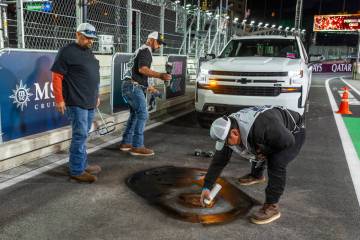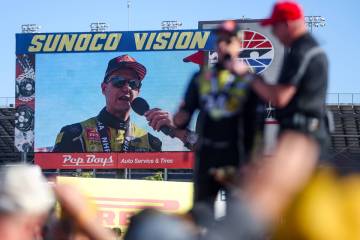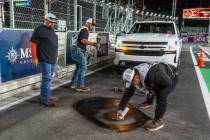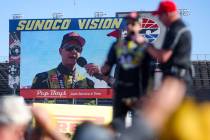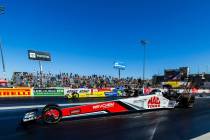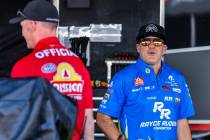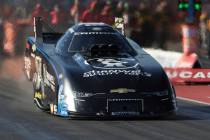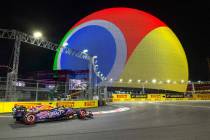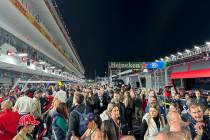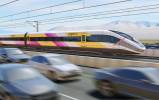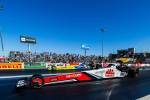Indy safety restrictions squelch innovation
Speed limits should be a topic of conversation in racing circles -- and ovals -- this week.
Just not one about Kyle Busch getting busted Tuesday for driving a sports car 128 mph in a 45 mph zone near Charlotte, N.C. Careless and reckless, yes; he showed bad judgment and apologized.
But his action was not a racing issue, so that's enough on that.
However, a quasi-speed limit for the Indianapolis 500 is pertinent.
Townsend Bell will start Sunday's race inside on the second row for a team owned by Henderson's Sam Schmidt. He doesn't think unlimited speeds belong on public roads, but he's in favor of them at Indianapolis Motor Speedway.
"We used to be a sport that fundamentally was about speed," Bell said. "It was a contest of man and machine, and what we've lost is 'machine' because (our cars basically are) all the same."
Over the past seven years, Indy poles were won with speeds in the 227 mph range because teams have been limited to one engine supplier and allowed virtually no internal modifications.
Alex Tagliani won the pole Saturday with a four-lap average of 227.442 mph.
In 1996, Scott Brayton took the pole with an average of 233.718 mph. He died a few days later in an Indy practice crash reportedly caused by tire failure. The pole speed dropped by 15 mph the next year.
"Our sport was built on speed," said Bell, a teammate to Tagliani for Sam Schmidt Motorsports.
Bell hopes speeds improve next year when Lotus and Chevrolet join Honda as suppliers of new 2.6-liter turbocharged engines.
"When I started racing cars at the Skip Barber school in 1996, nowhere did anybody tell me, promise me or suggest to me that what I was getting into was safe," Bell said.
"We all want safety to evolve, but we can't kill our sport," he said of technological innovations that once were the cornerstone for Indy.
IndyCar, NASCAR and NHRA have been proactive to slow their cars the past several years, whether to enhance safety for drivers and fans, to appease insurance carries or over fears about tire reliability.
Racers are concerned about safety but most concerned about how fast they can go.
It's not that Bell is a blatant risk-taker. His major concern entering his first race of the season and fifth in the Indy 500 is IndyCar's new policy of double-file restarts after caution periods when drivers line up two-wide as NASCAR has done the past two years. It will be implemented on an IndyCar oval track for the first time Sunday.
The two-wide concept has led to first-lap carnage at some of this year's first four races on street and road courses.
"Do we really need to NASCAR-ize our sport?" Bell asked, adding the traditional three-wide formation to start the Indy 500 already is "crazy."
Other Indy drivers share his trepidation. Tagliani succinctly summed up their opinions by calling the new restarts "really stupid."
Getting through the first turn of the first lap without crashing is a relief, Bell said. Now the challenge will be repeated several times.
Racing series have tough safety issues to face but everything needs limits, even racing speeds.
Double-file restarts for cars without bumpers that go much faster than stock cars?
We'll see how that works Sunday.
Jeff Wolf's motor sports column is published Friday in the Las Vegas Review-Journal. He can be reached at jwolf@reviewjournal.com or 702-383-0247. Visit lvrj.com/motorsports for more news and commentary. Follow Wolf on Twitter: @lvrjwolf.






